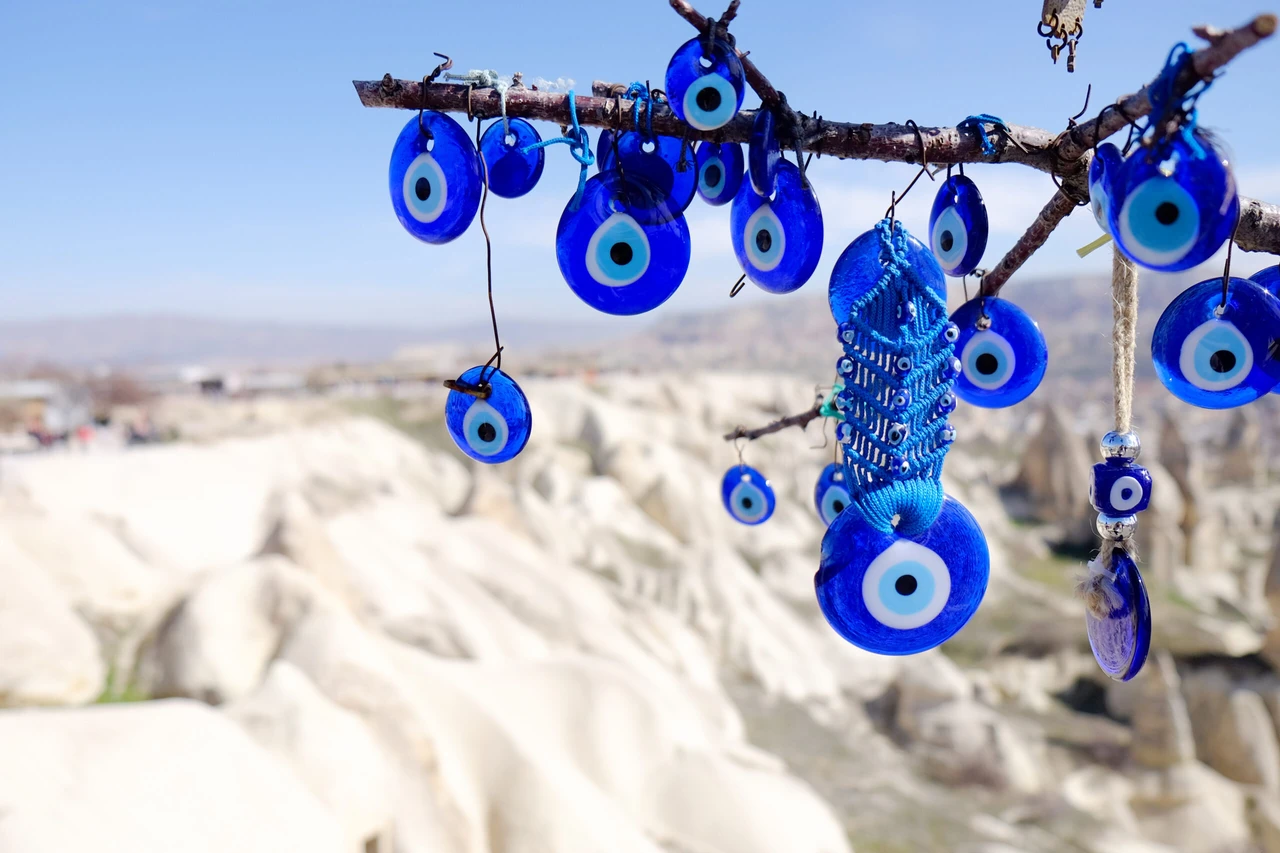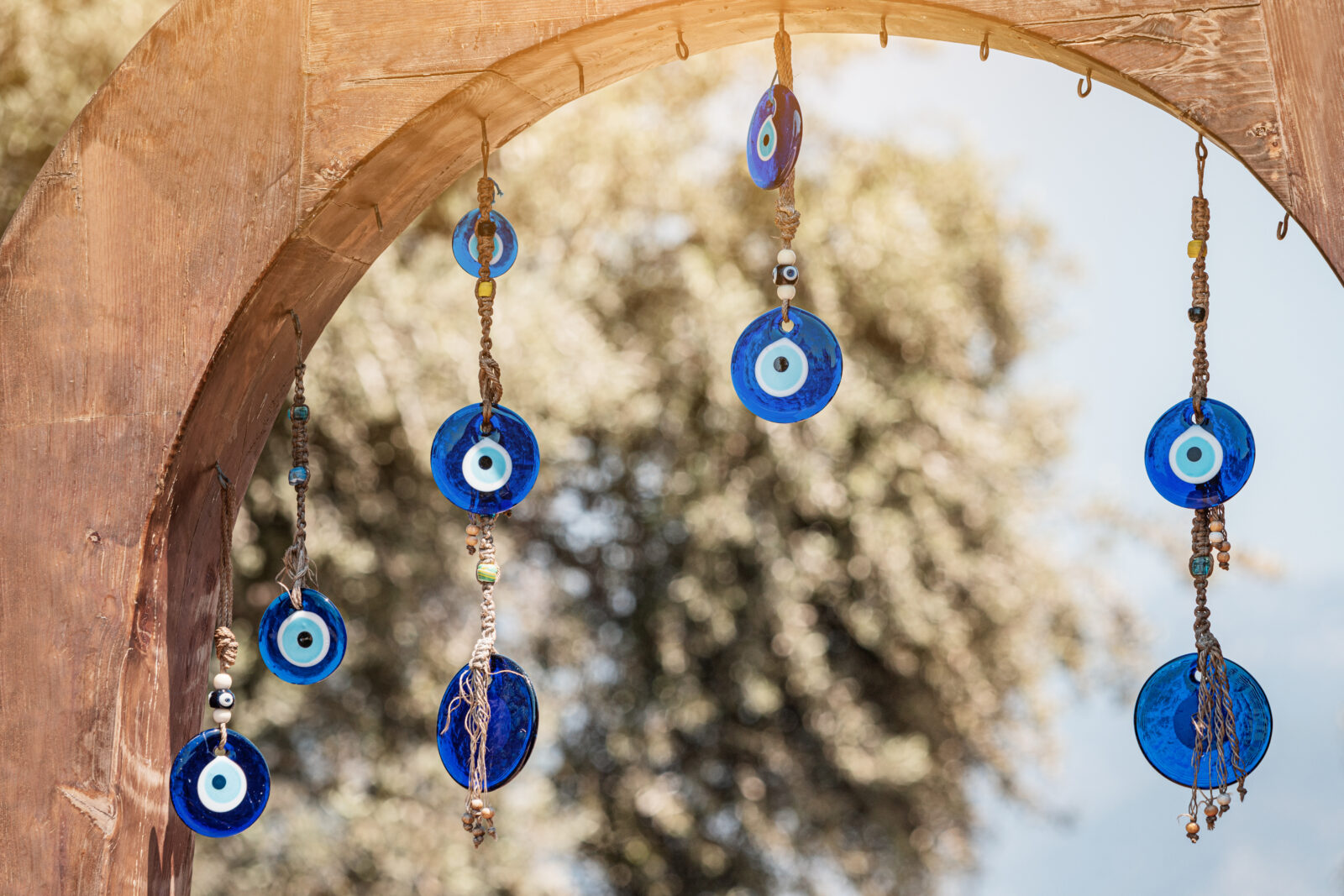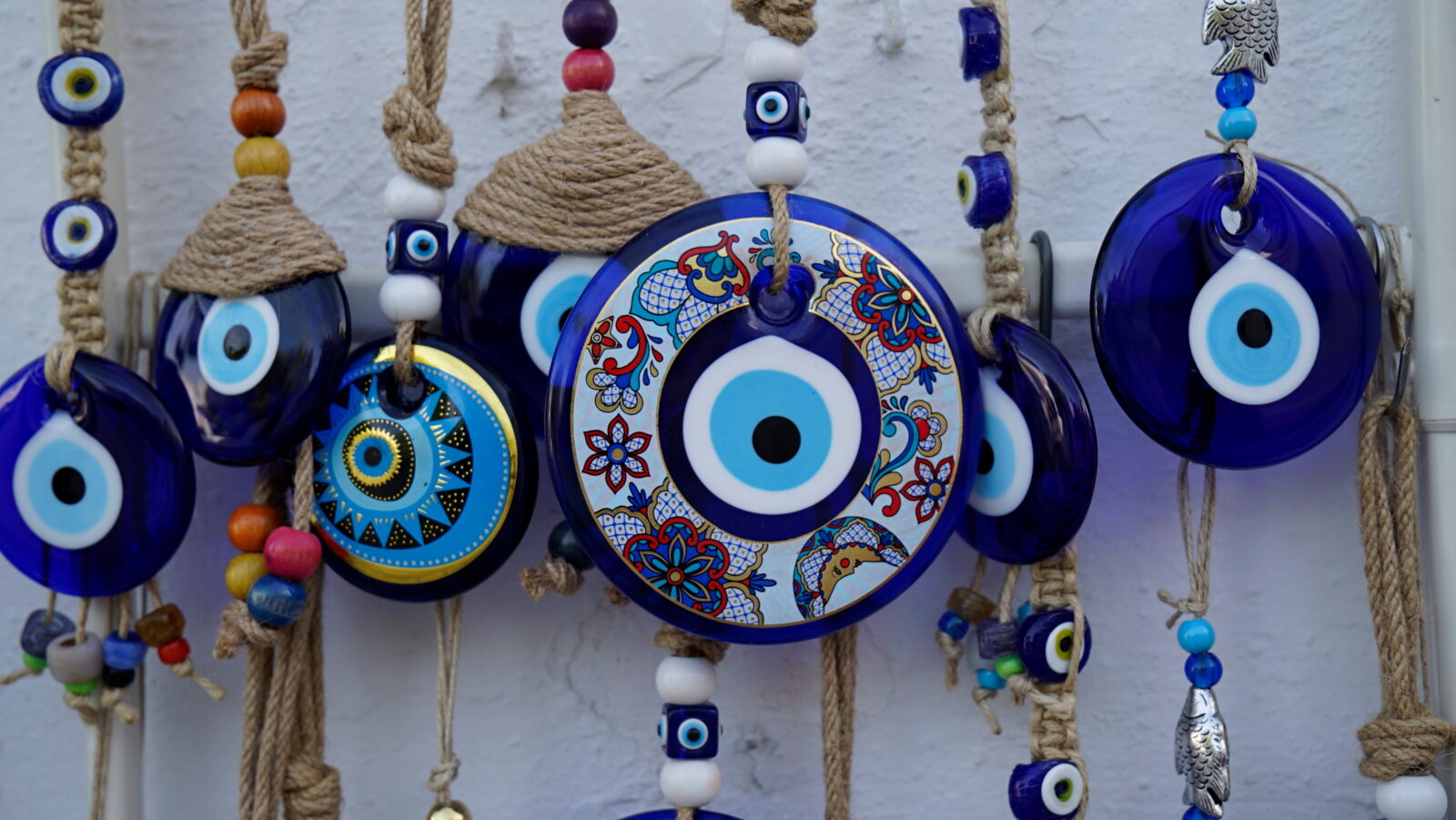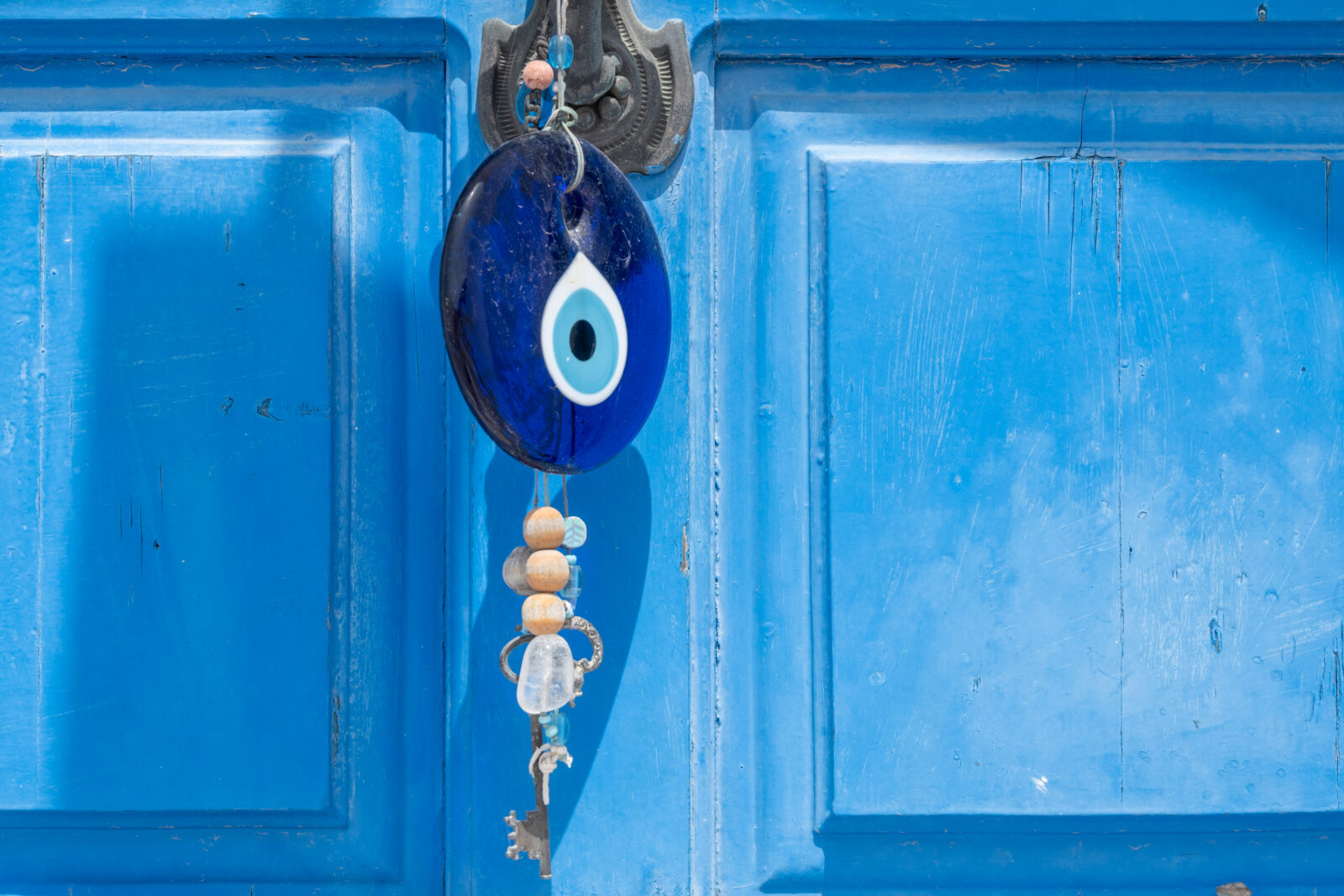Evil eye: Shared symbol of Türkiye and Greece or cultural tug-of-war?
 Evil eye charms hang from a tree in Cappadocia, Türkiye. (Adobe Stock Photo)
Evil eye charms hang from a tree in Cappadocia, Türkiye. (Adobe Stock Photo)
The evil eye blue glass charm, often called ‘nazar boncugu’ in Türkiye and ‘mataki’ in Greece, has long been a protective emblem against envious looks and misfortune.
Both nations hold the symbol dear, but its widespread use has raised questions about its true origins and cultural ownership.

How evil eye became shared symbol of Türkiye, Greece
Both Türkiye and Greece consider the charm a significant part of their cultural heritage. This has led to a debate similar to those over shared dishes and traditions.
The amulet, however, stands out as a shared representation of protection and spirituality in both societies.
In Türkiye, it is seen everywhere, from homes to cars and even as a gift to ward off negative energy. Similarly, in Greece, it is commonly worn as jewelry or displayed in homes to keep harmful influences at bay.
The symbol’s origins, however, go beyond modern borders. Archaeological evidence suggests that the first forms of this protective charm appeared in ancient Mesopotamia around 3300 BCE.
The ancient Egyptians also used similar symbols, such as the eye of Horus, to protect against evil. This widespread use throughout the Mediterranean and the Middle East shows a shared cultural heritage that both Türkiye and Greece have embraced and adapted overtime.

Evil eye becoming symbol of Türkiye, cultural significance
In Türkiye, the charm has become a part of national identity. The use of blue glass beads to protect against harm began around 1500 BCE in Anatolia.
Dr. Nese Yildiran, an art history professor, explained that the blue color has special significance in Turkish culture, representing the sky and linking to the ancient Turkic belief in the sky god, Tengri.
This belief has made the blue bead a lasting symbol of protection and good fortune in the region.
The arrival of Egyptian glassmakers in the area also influenced the unique style of the evil eye associated with Türkiye today.
As trade routes expanded, the symbol spread throughout the Mediterranean and beyond, reaching places as far as Europe and the Americas.

Greece’s ancient traditions, evil eye’s role
In Greece, the evil eye charm, known as mataki, also has a deep-rooted history. Greek philosophers such as Plato and Plutarch discussed the harmful effects of envious gazes.
This belief continues in modern Greek culture, where it is common to use these charms for protection.
The Greek version often includes additional symbols, such as the hamsa, a hand-shaped amulet that also protects against negativity.
This mix of symbols reflects the region’s long history of cultural exchange. The evil eye in Greece, like in Türkiye, is not just a decorative object but a meaningful part of everyday life.

Global reach of evil eye from Türkiye, Greece
Today, the evil eye extends beyond Türkiye and Greece, becoming a global symbol of protection. Its simplicity and powerful meaning have made it a popular motif in fashion and jewelry worldwide. Celebrities like Kim Kardashian and Gigi Hadid have been seen wearing it, boosting its popularity outside of Türkiye and Greece.
Despite its modern reinterpretation as a fashion accessory, the evil eye still holds deep cultural significance. It represents a shared human desire to protect against harm and misfortune, a belief that resonates across cultures and religions.
“This symbol has always been part of a vast cultural geography, open to various interpretations and uses,” as Dr. Yirldiran noted.
While pinpointing the exact origin of the charm may be impossible, its role as a shared cultural icon for both Türkiye and Greece is undeniable.
The debate over its ownership is less important than recognizing its ability to connect people across borders and generations.
The evil eye remains a powerful emblem, transcending cultural boundaries and serving as a reminder of humanity’s enduring belief in the need to guard against unseen forces.



